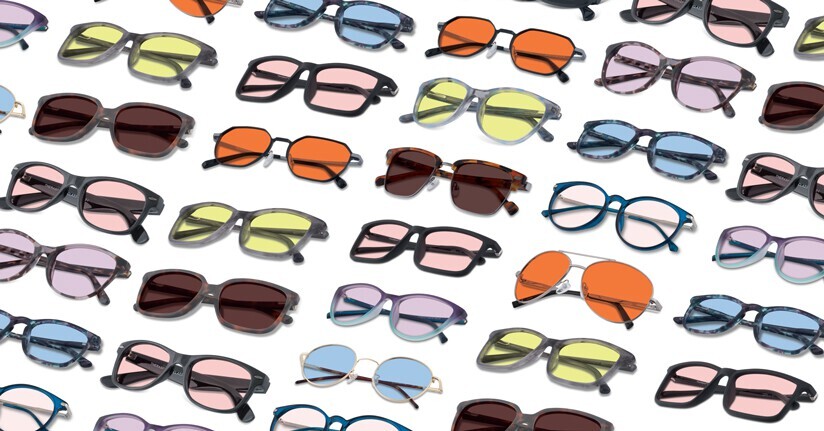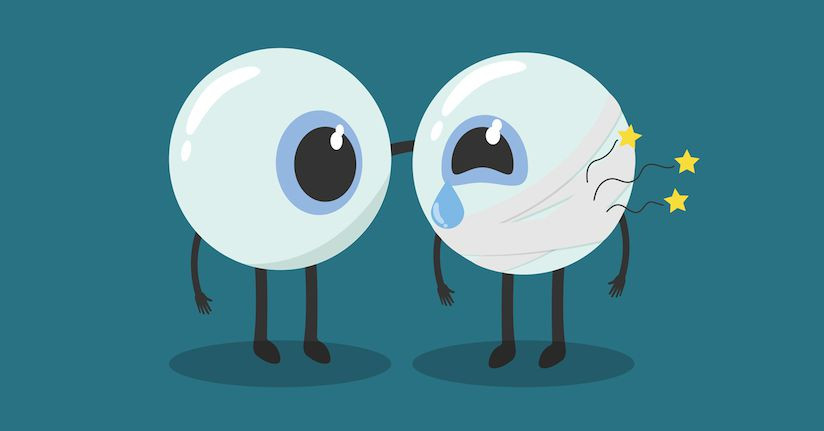Can You Experience Light Sensitivity in One Eye?
If you are sensitive to light, exposure to any kind of bright light can set off a painful sensation in your eyes; not only is this a source of discomfort, but for many this feeling often migrates to the brain in the form of a migraine attack or other neurological episode. While it is often experienced in both eyes simultaneously, believe it or not there are instances where light sensitivity symptoms reportedly affect just one eye.
Sensitivity to light that is felt in just one eye or on one side of the head has also been termed unilateral photophobia. Many medical professionals are skeptical of whether or not this phenomenon can truly occur, primarily because of the imprecision of data collection and patient recall as well as the lack of direct clinical research.1 But the fact remains: countless patients have acknowledged episodes of light sensitivity that unilaterally impact one side more than the other.
Possible causes
As discussed, unilateral light sensitivity is not very common, but evidence points to very specific conditions or occurrences that contribute to its onset. These may include:
- physical trauma to one eye
- certain eye disorders
- specific neurological conditions
We explore each of these issues more in depth below.
Eye or related head trauma
Physical injury, such as head or eye trauma (e.g. corneal abrasion), has long been a known cause of photophobia as a symptom. If the trauma occurs to just one eye or one side, then it is possible that this painful sensitivity to light can follow the same physical direction. Similarly, some have suggested that an allergic reaction that occurs within the eye can also lead unilateral photophobia.
Certain eye conditions
Experts explain that some ocular conditions can appear to affect only one eye in the early stages of their onset. As a result, light sensitivity may be experienced unilaterally. Glaucoma is probably the most notorious of these eye disorders in which symptoms can become more prominent in one eye, although it generally impacts both eyes over time. This can create the perception that symptoms, including photophobia, are only felt on one side.
Iritis, which is inflammation of the iris and has multiple potential causes, is another eye condition that is known to affect only one eye. According to WebMD, unilateral ocular pain associated with iritis is worsened specifically when exposed to bright lighting.
Specific neurological conditions
Light sensitivity also has a clear neurological origin as a result of the way light is transmitted through the eye directly to the brain. This makes primary headache disorders and similar conditions particularly vulnerable to photophobia, including its unilateral development. In particular, cluster headache may present with single-sided sensitivity to light and other symptoms for nearly half of patients. Other studies have affirmed the lateralization of light sensitivity in cluster patients, although this remains a controversial finding. Conversely, there is a much higher likelihood of experiencing it in one eye when compared with chronic or episodic migraine.2,3
Cluster headache is actually just one of the trigeminal autonomic cephalalgias, a group of headache conditions that specifically manifest with one-sided symptoms. Hemicrania continua and chronic paroxysmal hemicrania are among those that may also lead to light sensitivity in a single eye.
Amazingly, there is further evidence of unilateral photophobia and other neurological symptoms occurring in patients where there is no obvious cause. Researchers have discovered a disruption in the visual pathway within the eye in some of these cases; however, a diagnosis of “conversion disorder” (in which a stressful event can bring about physical consequences) may be another explanation.4,5
Treatment recommendations
Photophobia and light sensitivity, especially if it is experienced in just one eye, needs to be investigated by a medical professional. The most important thing is to get checked! This will help pinpoint the exact reason for the unilateral sensitivity to light and help determine the most appropriate treatment method.
There are also several other suggestions for dealing with ongoing light sensitivity, which you can learn more about by clicking below.
References:
1Wu Y, Hallett M. Photophobia in neurologic disorders. Translational Neurodegeneration. 2017;6:26. doi:10.1186/s40035-017-0095-3.
2Irimia P, Cittadini E, Paemeleire K, Cohen AS, Goadsby PJ. Unilateral photophobia or phonophobia in migraine compared with trigeminal autonomic cephalalgias. Cephalalgia. 2008 Jun;28(6):626-30. doi: 10.1111/j.1468-2982.2008.01565.x. Epub 2008 Apr 16.
3Bahra A, May A, Goadsby PJ. Cluster headache: a prospective clinical study with diagnostic implications. Neurology. 2002 Feb 12;58(3):354-61.
4Kido A, Ogino K, Miyake Y, Yanagida K, Kikuchi T, Yoshimura N. Unilateral negative electroretinogram presenting as photophobia. Doc Ophthalmol. 2016 Aug;133(1):71-9. doi: 10.1007/s10633-016-9544-z. Epub 2016 May 31.
5Chang A, Bateman J, Capó-Aponte J. Conversion Disorder Presenting with Unilateral Photophobia and Vision Loss. Optometry & Visual Performance. 2015 Feb;3(1):151-157.

TheraSpecs® Glasses for Light Sensitivity
Find the glasses that fit your needs and lifestyle, and stay protected from screens, fluorescents, unwanted blue light, sunlight, flashing lights, and more.
Shop Now



